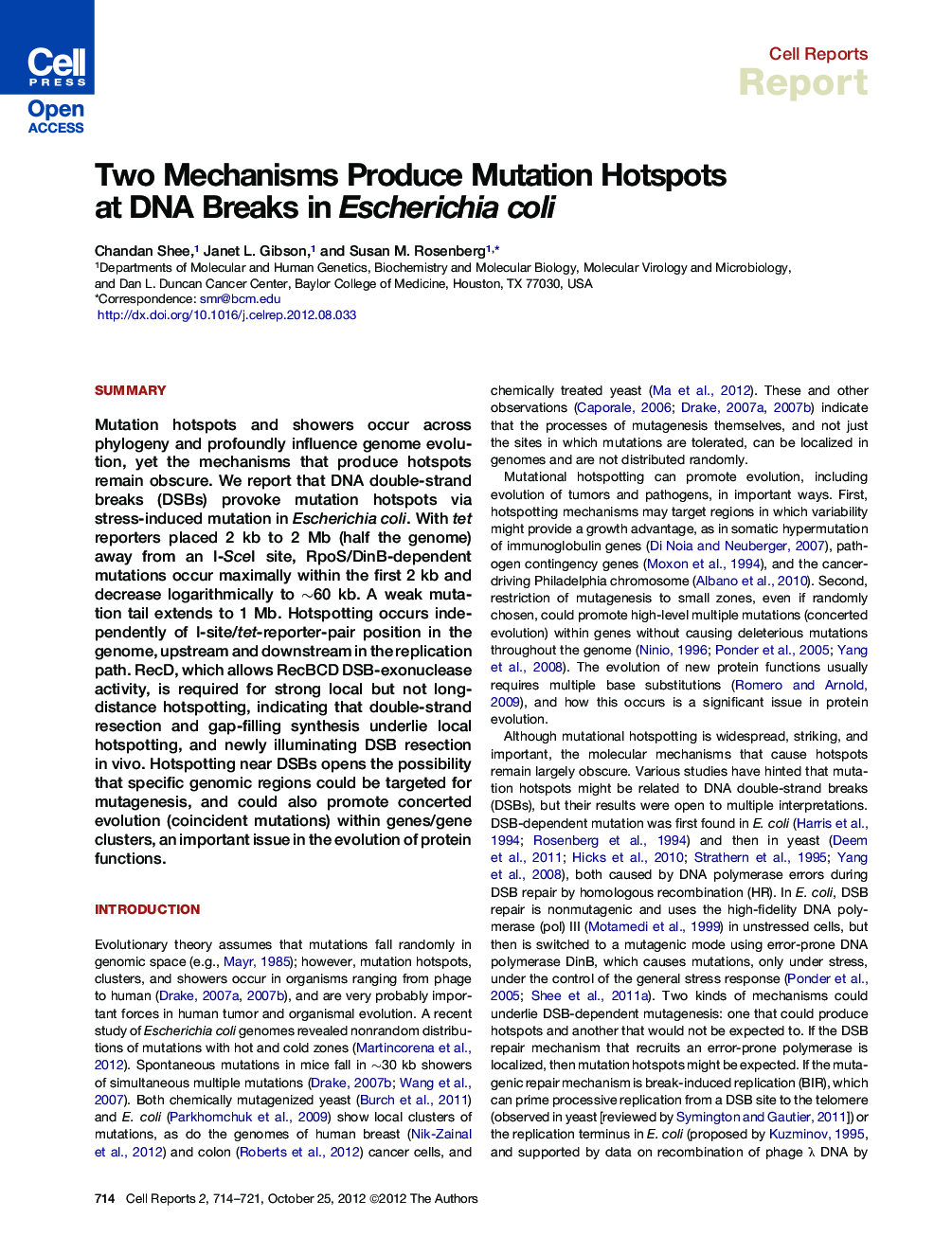| کد مقاله | کد نشریه | سال انتشار | مقاله انگلیسی | نسخه تمام متن |
|---|---|---|---|---|
| 2040382 | 1073109 | 2012 | 8 صفحه PDF | دانلود رایگان |

SummaryMutation hotspots and showers occur across phylogeny and profoundly influence genome evolution, yet the mechanisms that produce hotspots remain obscure. We report that DNA double-strand breaks (DSBs) provoke mutation hotspots via stress-induced mutation in Escherichia coli. With tet reporters placed 2 kb to 2 Mb (half the genome) away from an I-SceI site, RpoS/DinB-dependent mutations occur maximally within the first 2 kb and decrease logarithmically to ∼60 kb. A weak mutation tail extends to 1 Mb. Hotspotting occurs independently of I-site/tet-reporter-pair position in the genome, upstream and downstream in the replication path. RecD, which allows RecBCD DSB-exonuclease activity, is required for strong local but not long-distance hotspotting, indicating that double-strand resection and gap-filling synthesis underlie local hotspotting, and newly illuminating DSB resection in vivo. Hotspotting near DSBs opens the possibility that specific genomic regions could be targeted for mutagenesis, and could also promote concerted evolution (coincident mutations) within genes/gene clusters, an important issue in the evolution of protein functions.
Graphical AbstractFigure optionsDownload as PowerPoint slideHighlights
► Spontaneous mutation pathway in Escherichia coli causes hotpots at double-strand breaks
► Strong local (2–60 kb) hotspot mechanism double-strand resection and gap-fill
► Weak long-distance (1 Mb) mutagenesis by break-induced replication
► Break-induced replication and length of DNA-end resection in natural repair with sister chromosomes
Journal: - Volume 2, Issue 4, 25 October 2012, Pages 714–721